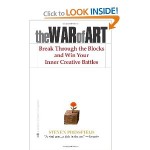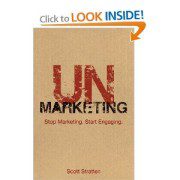You’ve Got to Conquer Your Resistance. Here’s How.
Until recently, I was most familiar with Steven Pressfield as the author of The Legend of Bagger Vance, though he has written a number of other well-received books. And then a year ago, I ran across The War of Art. Curious, since I’d just finished The Art of War, I started reading and found myself drawn into a world that I quickly recognized as my own.
“It’s not the writing part that’s hard.
What’s hard is sitting down to write.”
“Most of us have two lives. The life we live, and
the unlived life within us. Between the two lies Resistance.”
Pressfield’s thesis is that we all have something within us that both seeks and runs from expression. The book is written expressly for creatives, but even a cursory read reveals that it applies to everyone who has a big goal or calling of some sort. Pressfield speaks specifically to divinely-inspired genius, and the latter part of the book delves into the role of the divine in genius and talent. Whatever the source of this talent, however, Pressfield’s focus and his brilliance lies in explaining the role of Resistance and how to recognize and ultimately vanquish it.
Pressfield defines Resistance as “the enemy within”, a “repelling force” that “prevents us from doing our work”. Resistance comes in many forms: procrastination, personal drama, and “plausible, rational justifications for why we shouldn’t do our work”. As I read, it became clear to me that “our work” refers equally to writing or any other form of art and to the work of practicing law, including building a book of business.
In The War of Art, Pressfield introduces the pro, meaning one who combats Resistance and is determined to do the work. The pro knows that “if he caves in today, no matter how plausible the pretext, he’ll be twice as likely to cave in tomorrow. The professional knows that Resistance is like a telemarketer; if you so much as say hello, you’re finished. The pro doesn’t even pick up the phone. He stays at work.” In Turning Pro, Pressfield further distinguishes the amateur from the pro and offers insight into making the shift.
The concept of Resistance (and Pressfield’s specific identification of its dangers) prompted me to read The War of Art through a lawyer’s eyes. As I did, I discovered that Pressfield describes almost every one of the key mistakes I see among would-be rainmakers. For example:
- Would-be rainmakers often plunge headfirst into activity, frantically doing everything that seems like it might lead to new business. Pressfield identifies the cause of this hyperactivity as Resistance: “Resistance gets us to plunge into a project with an overambitious and unrealistic timetable for its completion. It knows we can’t sustain that level of intensity. We will hit the wall. We will crash.” Instead of the pedal-to-the-metal approach, he counsels, look on the work as a marathon, and prepare for the long haul.
- Likewise, engaging in over-the-top activity leaves little time for study and developing skills. Like firing up a new gadget without reading any of the instructions, jumping from one activity to another can yield superficial success but will never lead to the level of success that results from truly mastering skills. “The professional dedicates himself to mastering technique not because he believes technique is a substitute for inspiration but because he wants to be in possession of the full arsenal of skills when inspiration does come.”
- Fear can paralyze the aspiring rainmaker, resulting in too much planning and little, if any, action. We lawyers don’t often talk about fear in a professional setting, but the truth is that stepping up to build a book of business can arouse fears of saying or doing the wrong thing, looking dumb, seeming pushy or desperate, being rejected, being perceived as unprofessional, and so much more. Preparation can reduce some of those fears, but as Pressfield observes, anyone who succeeds in doing the work “knows that once he gets out into the action, his fear will recede and he’ll be okay.” The only way out of fear is to move through it.
What’s in it for lawyers? The War of Art and Turning Pro both address a problem that often goes unaddressed in the business literature. Self-sabotage is rampant, and Pressfield nails both the why and the solution in his description of Resistance.
While you may not feel that your practice rises to the level of a calling, committing fully to becoming a rainmaker (through study, planning, and action) requires deep dedication to the goal and a compelling reason to continue despite the inevitable setbacks and difficulties. Success requires conquering Resistance.
Nearly every successful author adheres to the discipline of daily writing. Even if the writing for the day is dreadful, the act of writing makes the flashes of inspiration possible.
Parallels exist for every pursuit you might imagine. In the context of business development, daily activity ensures that something happens each day. On some days, that something may be fairly meaningless, but showing up and doing the work every single day creates the opportunity to be in the right place at the right time to meet a key contact or to have a conversation with a potential client just after an unmet legal need has popped up.
The War of Art and Turning Pro are poetic, juicy books that might be best consumed on vacation or over a glass of wine. They speak to the mind, but they influence the heart. Having read the books, you will be better able to identify and combat Resistance. You’ll also find yourself inspired by the drama that Pressfield describes. Although the books are somewhat light on step-by-step “how to” instructions, you’ll find gems throughout.












Excellent, engaging review, Julie. I almost feel I don’t need to read the book now — but maybe I’m just resistant!
Thanks, Elena! Don’t miss this book, though. A summary cannot do it justice!